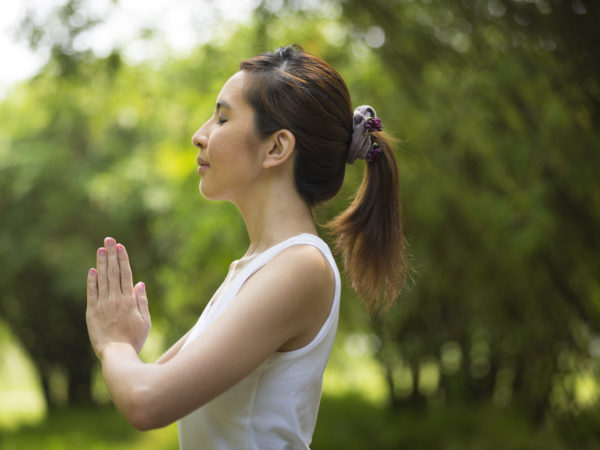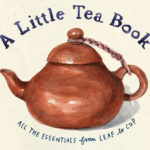An Interview with Bill Douglas

What benefits can Tai chi and Qigong bring to others?
The world is experiencing a stress crisis, and in fact a 20-year study by Kaiser Permanente found that between 70 and 85 percent of illness sending patients to their doctors were rooted in unmanaged stress. A large reason for our modern stress is that the world is changing so incredibly rapidly. Change is stressful, even good change. Now, having said that, not all stress has to be bad. Stress being healthful or unhealthful depends on how our mind and body processes the events in our lives. Tai chi & Qigong offer highly effective tools to help us “breathe through” the coming challenges in our lives, society and world, letting go of or “exhaling” outdated feelings and beliefs that no longer work, while becoming flexible in body and mind to open more easily to wholly new and more effective ways of being and doing. Oddly, these ancient tools have spread worldwide at a time when our modern world needs them the most to relax into the challenging future. We can learn a few simple techniques to stay balanced in an increasingly digital and always accelerating world.
In this increasingly digital age, we experience less and less right brain tactile experience, and are more and more drawn into the analytical or left-brain thinking. It’s not that one is better than the other, both are great, but we need balance. For example, by shopping online, we save gas from driving, save time, etc., but we don’t smell the food shops at the mall or feel the warmth of sunbeams from the skylights or their glitter in our eyes, or feel the texture and smell the scent of the towels we may purchase, etc. In a digital world we miss the tactile pleasure, or right brain experiences we need to maintain balance. T’ai chi & Qigong are designed to “soak us” in the tactile pleasure experience of the body as we go through gentle movements. And amazingly, by using these techniques regularly it encourages us to bring that tactile pleasure awareness into our digital lives. We find ourselves taking more time to “smell the herbal apple-cinnamon tea” beside our computer keyboard, feeling the warmth of the cup on our hands, or noticing the texture of the computer keys on our fingers, or even remembering to breathe deeply and allow the trees and sky outside our office window to soak into our awareness in that healing way it always does when we take the time to let it happen.
When T’ai chi beginners get the hang of it, what is the most common reaction?
The traditional chinese instructional methods have often depended on the discipline of the student, to eventually feel the benefits by virtue of sticking with T’ai chi until they did. Because I’ve taught in America’s heartland of Missouri, the “Show Me State,” and also through my years teaching T’ai chi & Qigong as stress management techniques for major corporations, I’ve been challenged to help students feel the benefits of T’ai chi & Qigong immediately – the first day of class. If I couldn’t help them feel benefit right away, most wouldn’t stick with it. So my program of instruction teaches these ancient tools in a modern/Western way that helps students get it immediately.
I’m also working with T’ai chi & Qigong teachers worldwide to encourage them to begin adapting T’ai chi & Qigong instruction to make it culturally friendly for their local students – no matter what country or culture they teach in. Following the philosophy of T’ai chi, we encourage teachers to be flexible and allow their teaching methods to adapt to best suit the needs of their students, rather than rigidly expecting students of various cultures to all learn T’ai chi the way we were taught it, thereby enabling millions more people to enjoy T’ai chi’s benefits more quickly.
On benefits, students often comment about feeling a great sense of well-being, a sense of “being here and now” rather than scattered and anxious. I’ve heard students say after a class that they feel like they just had a day at the spa. What’s so wonderful is that the first taste of T’ai chi & Qigong – which feels so good and liberating – is only the beginning of a lifelong journey of pleasure, self discovery, and personal growth that these amazing gifts from china offer people all over the world.
Many students also talk about relief from chronic pain they’d suffered before, or improved performance in sports, lowering high blood pressure, and being much more calm with family, co-workers, and others on the freeways that once irritated them to no end. Research indicates that T’ai chi & Qigong can lessen depression, anxiety and mood disturbance, as well as dramatically improving balance and coordination, improving breathing capacity, and lessening or eliminating chronic pain. Also, amazingly – given its gentle nature – it provides roughly the same cardiovascular benefit as moderate impact aerobics.
Is there anyone who shouldn’t practice T’ai chi or Qigong, and why?
Anyone with an existing condition is well advised to consult their physician before beginning any exercise program. Having said that, realize that T’ai chi is perhaps the lowest impact exercise there is. It is extremely gentle, does not require the practitioner to get down on the floor, and thereby is often perfect for even the most delicate conditions. I have taught professional athletes, corporate executives, maximum security prisoners in prisons, drug rehabilitation patients, students in wheelchairs, elderly students with advanced Parkinson’s, children with ADD, students with learning and developmental disabilities, and people with full blown AIDS. I have found in my experience that anyone and everyone can get great benefits from T’ai chi & Qigong, but again it’s always good to let your physician know what you are up to. If for no other reason, just so they can witness your dramatic improvement as you progress through your T’ai chi journey.
What sparked your interest in T’ai chi and Qigong?
You know it’s funny to look back now, after founding a worldwide health education event like World T’ai chi & Qigong Day, to educate millions worldwide of the benefits of T’ai chi & Qigong, and having it recognized by the United Nations, World Health Organization and governors of many states…how I almost “accidentally” stumbled into discovering T’ai chi & Qigong for myself 25 years ago.
Like millions of people coming to T’ai chi & Qigong today, I had no idea what it really was when I began it. I was simply stressed out and needed “something that would work for me.” When I began my first T’ai chi and Qigong class, I didn’t even know how to pronounce the words. (I thought it was pronounced Tay-ieee-chie, but learned later it’s “Tie-Chee”). I was just going through a lot of life and career changes (which most of the planet is experiencing now), and was very stressed out, so a friend suggested I try a T’ai chi class at the local community college.
Today through my global efforts, I guess I’m just trying to be that same friend to millions worldwide, saying to them, “Hey, I know how stressed life can get…try out this class someone told me about, it’s really great!”
What benefits have practicing these arts brought to your life?
That first night of T’ai chi & Qigong class dramatically changed the way I felt physically, emotionally and mentally. I felt so clear, so unburdened and so “here and now” – in a way I hadn’t felt in many years. Remember when we were kids and simple things like dust mote meteors shooting through the brilliant sunrays would totally mesmerize and entertain us? This was a time when we felt at home in the world, and the world was not a threat or something to be feared, but rather a place of wonder, pregnant with possibility. That was the long-lost feeling that I got a new taste of from my first T’ai chi & Qigong class, and I knew then and there (that) I wanted more of this feeling. So, 25 years later, here I am, still enjoying T’ai chi & Qigong, but of course, I’m also teaching it to a world in need of calm and peace of mind. It would be selfish of me to keep it all to myself.









